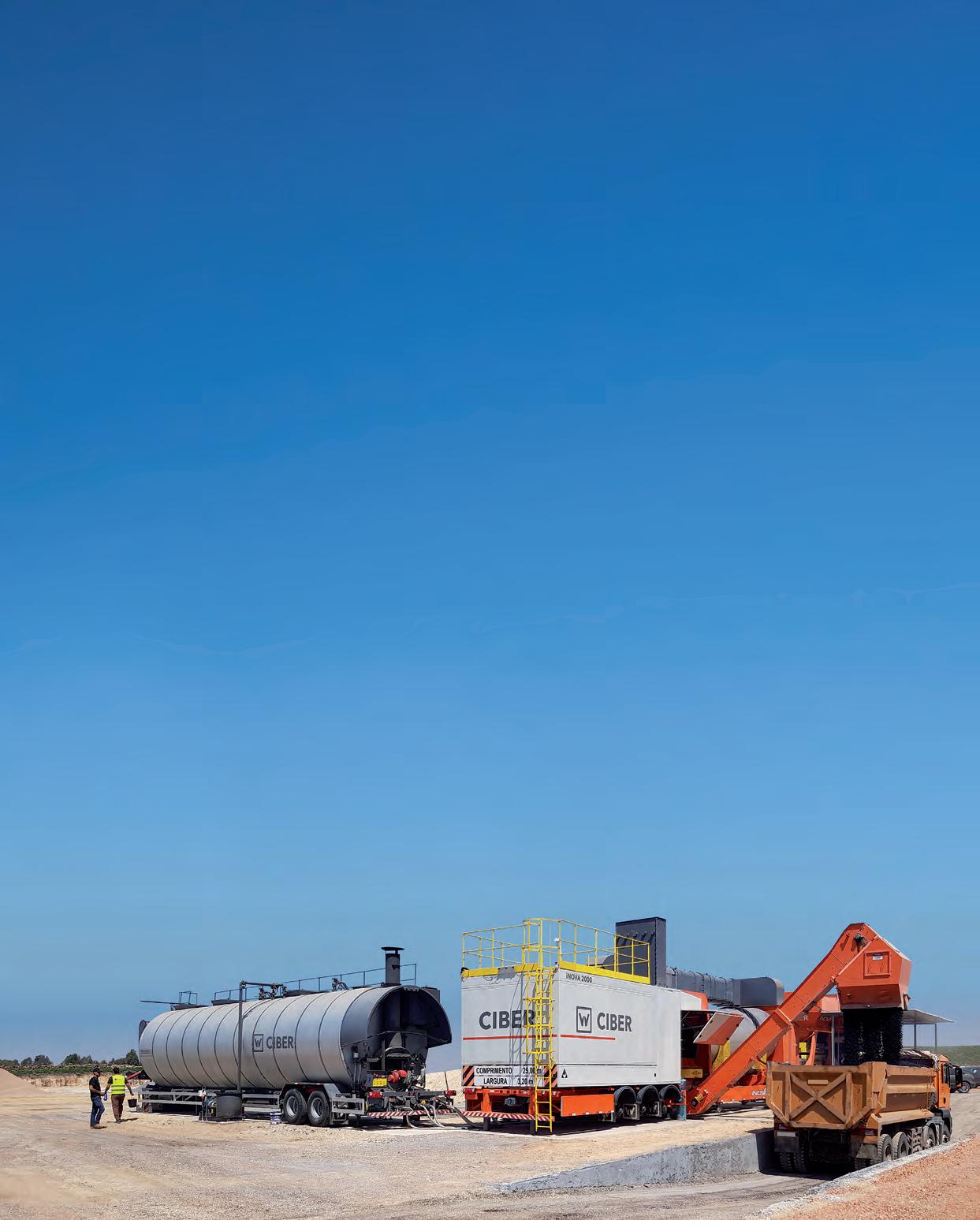
3 minute read
Handling asphalt
HANDLING MODIFIED ASPHALT AND THE
EFFECT OF AGEING BITUMEN
CIBER IS A MAJOR ORIGINAL EQUIPMENT MANUFACTURER OF ASPHALT PLANT AND EQUIPMENT. ROADS & INFRASTRUCTURE SPEAKS TO CIBER ABOUT THE COMPLEXITIES OF BITUMEN AND LOOKING AFTER AN ASPHALT PLANT.
There are certain measures asphalt plant owners can take to ensure that when handling bitumen, whether it is a standard mix or specialised, that it is produced to the highest quality possible.
While achieving high quality asphalt results, it is also important to ensure the plant is well looked after and can continue producing at the best quality and efficiency.
BITUMEN AGEING ON PROJECTS Marcelo Zubaran, Product & Application specialist at CIBER says measures can be taken during the logistics and production steps of bitumen and asphalt production to minimise binder ageing effects.
High temperatures, ultraviolet radiation, the presence of oxygen and the surface area cause bitumen to age. This often happens in two forms, either volatilization (when part of the light oils in the bitumen evaporate), or oxidation as a result of chemical reactions in the bitumen (when the light oil becomes hard).
“The first step towards minimising ageing effects is during the transportation of bitumen from the refinery or distributor to the job site. Here the bitumen should avoid any contact with flames in the tank’s heater,” he says.
Secondly, he outlines when feeding bitumen into the tank for works it is preferable to have a high flow pump, this can reduce ageing as it shortens the materials contact with oxygen.
“Bitumen heating in the work tank is also important, the bitumen needs to be heated according to its viscosity without exceeding limits specified by the supplier,” Zubaran says.
When planning for a project he suggests avoiding mixes with high filler to bitumen ratio as this can cause the bitumen film to be thin on the aggregates, increasing the chance of ageing.
“When the asphalt is in production at the plant, prioritise the use of pug-mill external mixers in continuous or discontinuous plants, and try to avoid large falls between the mix storage bin and the truck. This helps to reduce the asphalt’s contact with oxygen.”
Finally, during the application Zubaran recommends reducing the time between production, laying and compression as much as possible due to the mix cooling.
LOOKING AFTER THE PLANT Modified asphalt can require specific attention during mixing at the plant as well, not only to prevent ageing but also to ensure plant production and maintenance is not affected.
“In the production process, modified asphalt can require a high shear rate to be applied to the mix so the aggregates can achieve good adhesiveness,” Zubaran says.
“The mixing plant needs to be adjusted many times so the binder can disperse and cover the surface of the aggregates.”
He says certain mixes may also require a dry mixing stage so the thickness of the binder foil is homogeneous over the aggregates. Also, it can be important to adjust the mixing time, in the plant, according to the mix adhesion. This can be done, either in discontinuous or continuous asphalt plants.
“Regarding the plant’s maintenance, it is important to constantly verify the conditions of the bitumen tank filter in these applications. There may be accumulation of material in the filter, generating an increase of pressure in the pump, which can reduce pump flow.”
From there, transportation of the mix from the asphalt plant, is important to avoid blockages.
“It’s important the bitumen tank is prepared for efficient and safe offloading of the material. The suction piping should allow the pump gears to fill completely and the bitumen filter should be large enough to avoid blockages. Ideally there will also be a circulation system to keep the binder moving,” Zubaran says.
Asphalt plants need to be able to consistently handle the production process, even with modified and varied asphalt mixes.
“All it requires is the fine tuning of the operation and maintenance of the plant, this will enable success. Modified asphalt is a great technical alternative and should be applied in harmony with the equipment.”
Modified asphalt can require specific attention during mixing at an asphalt plant.










